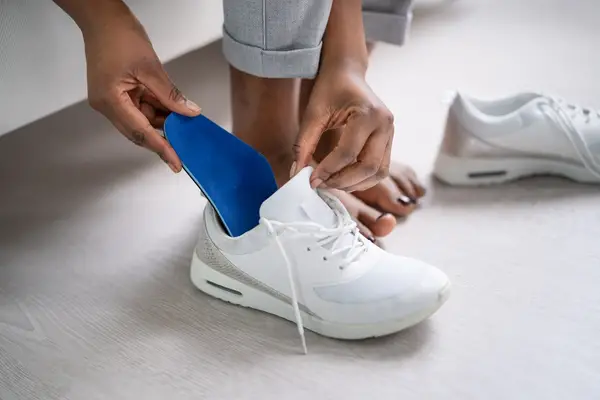
The Importance of Orthotic Devices for Aging Feet
As we age, our bodies undergo significant changes. One area that often experiences noticeable alterations is our feet. The arches may flatten, the skin may become thinner, and the bones may weaken. These changes can lead to discomfort, pain, and even mobility issues. That's where orthotic devices come into play.
Orthotic devices are custom-made inserts that are placed inside shoes to provide support, stability, and cushioning for the feet. They can help alleviate pain, improve balance, and enhance overall foot health. In this article, we'll explore the importance of orthotic devices for aging feet and how they can make a significant difference in your quality of life.
Age-Related Foot Changes
As people age, their feet undergo various structural and functional changes that can affect mobility and comfort. Some of the most common issues include:
- Flattening of the arches: Over time, the tendons and ligaments in the feet can weaken, leading to a loss of arch height. This can cause discomfort and an increased risk of foot pain or plantar fasciitis.
- Thinning of fat pads: The natural cushioning in the heel and ball of the foot diminishes with age. Without this padding, pressure points can develop, leading to discomfort during walking or standing for long periods.
- Decreased flexibility: Aging can lead to stiff joints and reduced flexibility, making it harder to adapt to uneven surfaces or absorb impact while walking. This may increase the likelihood of falls or other injuries.
- Nerve sensitivity changes: Nerve function can deteriorate with age, reducing the ability to sense changes in pressure or temperature. This is particularly concerning for conditions like diabetes, where decreased sensitivity can lead to unnoticed injuries.
An older adult may notice that long walks, once enjoyable, have become more painful. The arches of their feet may feel strained, and the reduced fat padding causes discomfort, especially when wearing unsupportive shoes. Without proper intervention, these changes can contribute to a cycle of inactivity, further weakening muscles and increasing discomfort.
Types of Orthotic Devices
For those with more complex foot conditions, Foot Ankle Lower Limb Clinic and other specialized podiatry clinics offer custom orthotics that are carefully crafted based on your unique foot anatomy. These devices are designed to address specific foot issues that off-the-shelf solutions cannot.
Over-the-Counter (OTC) Orthotics
- Pre-fabricated: These are mass-produced, non-custom inserts designed to provide general arch support and cushioning. OTC orthotics are typically more affordable and suitable for mild conditions like general discomfort or fatigue.
- Heel pads and arch supports: Common OTC devices include heel cups for cushioning and arch supports to relieve strain in the foot.
Custom Orthotics
- Tailored to specific needs: Custom orthotics are made from molds of your feet to provide precise support. These devices are ideal for individuals with severe foot issues, like flat feet, overpronation, or chronic pain.
- Material options: Depending on the condition, orthotics can be crafted from soft, flexible materials for cushioning or firmer materials for structural support.
The selection of orthotic devices should be guided by professional evaluation, especially for complex conditions. While OTC options can offer temporary relief, custom orthotic devices are typically more effective in providing long-term support tailored to individual needs.
Addressing Common Foot Conditions
Orthotic devices play a critical role in managing and alleviating several common foot conditions, extending their benefits to address common foot problems in children. Below are some of the most frequently encountered issues and how orthotics can provide targeted relief:
Plantar Fasciitis
- Symptom: Sharp heel pain, often worse in the morning.
- Orthotic solution: Custom orthotics provide arch support to reduce strain on the plantar fascia, distributing pressure more evenly across the foot.
Bunions
- Symptom: A bony bump at the base of the big toe, often causing pain or discomfort.
- Orthotic solution: Orthotics with special padding can offload pressure from the bunion, reducing discomfort, particularly in shoes.
Flat Feet (Fallen Arches)
- Symptom: Lack of arch support can lead to pain in the feet, ankles, and even knees.
- Orthotic solution: Arch-supporting orthotics elevate and stabilize the foot, correcting alignment issues caused by flat feet.
Diabetic Foot Ulcers
- Symptom: Ulcers or wounds on the foot, often due to poor circulation and nerve damage.
- Orthotic solution: Special orthotics redistribute pressure away from vulnerable areas, reducing the risk of ulcers and promoting healing.
When dealing with these conditions, it's essential to have orthotics that are fitted by a podiatrist. By addressing the specific needs of foot care for seniors, orthotics help improve foot function and overall mobility.
Conclusion
Orthotic devices play a vital role in maintaining foot health as we age, offering tailored solutions to relieve pain and improve mobility. With various options available, from basic over-the-counter inserts to fully custom devices, orthotics address specific issues like flat feet, plantar fasciitis, and diabetic foot complications. By selecting the right type of orthotic based on individual needs, older adults can stay active and comfortable, reducing the risk of injury and supporting overall well-being. Proactive foot care helps promote long-term mobility and a better quality of life.